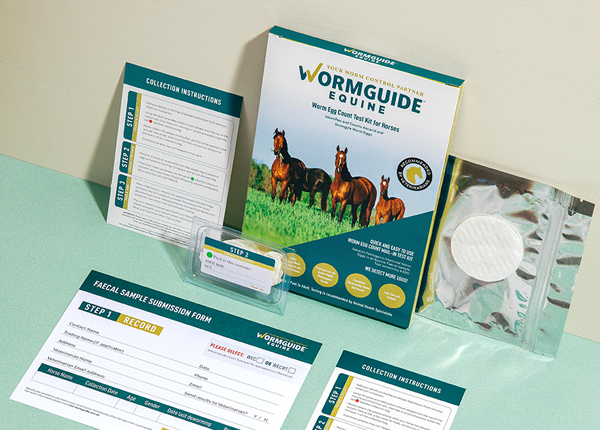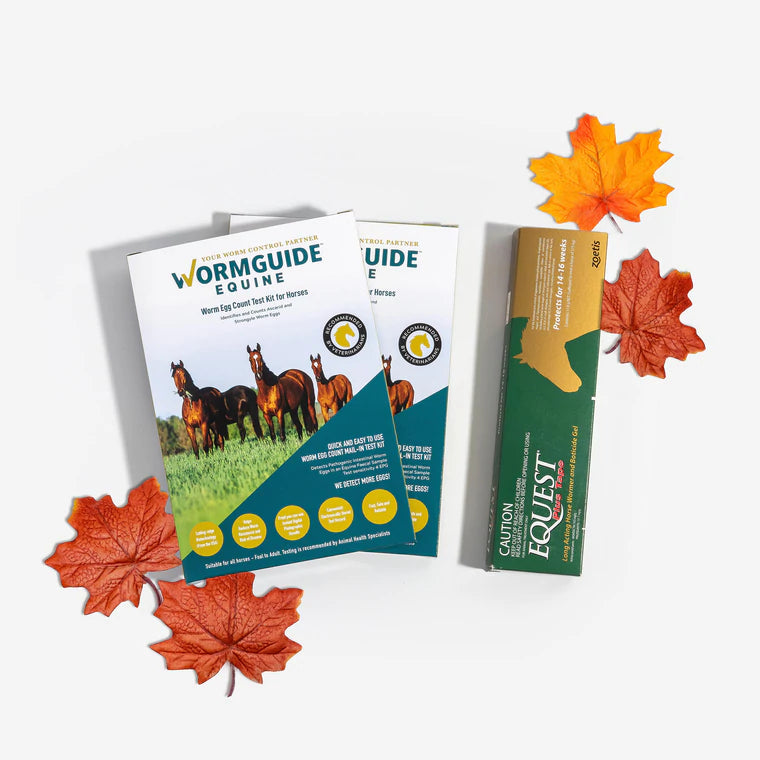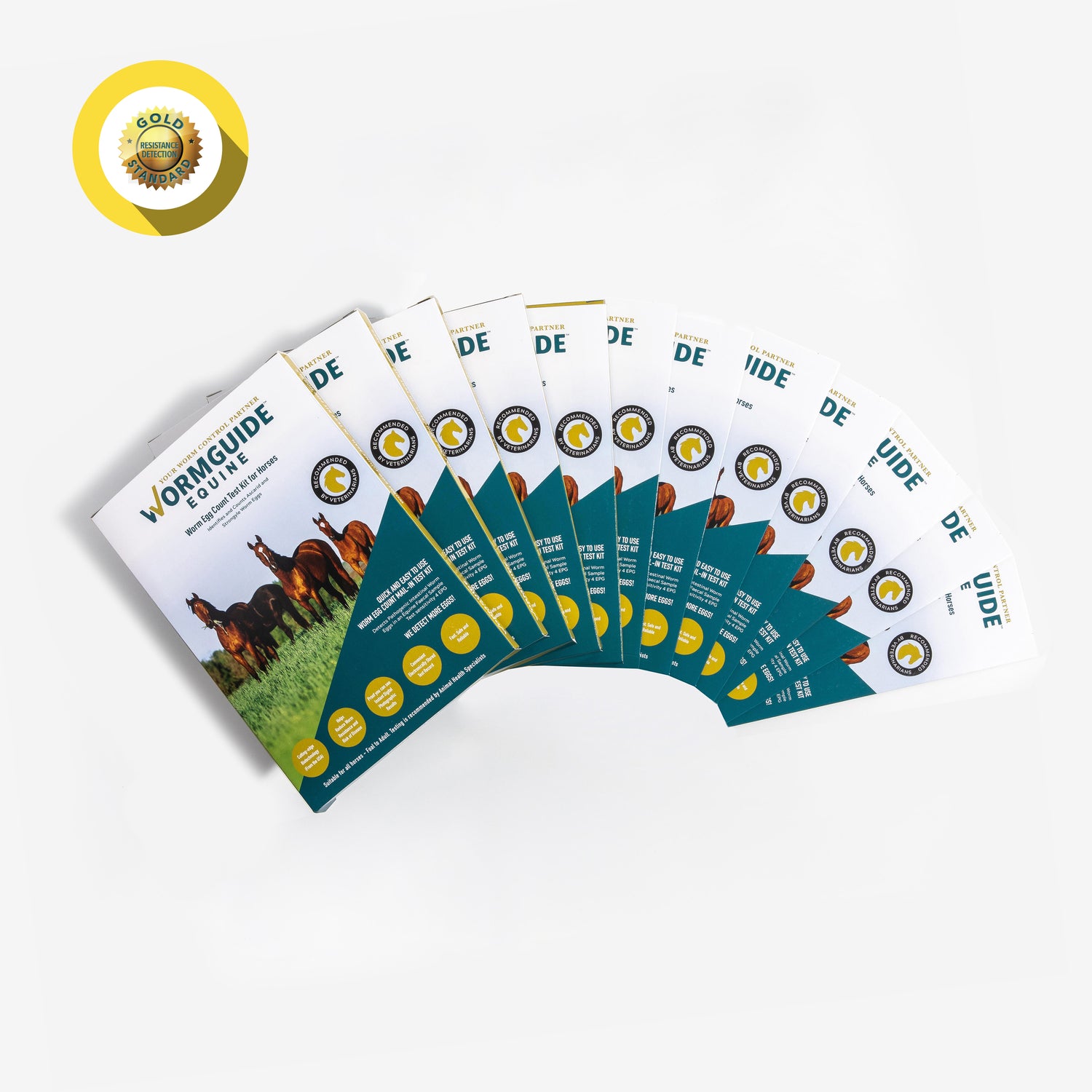
Step 1 Take Control
First, worm egg counts should be used to determine your horses small strongyle egg shedding levels. Worms resistant to the worming chemicals used to kill them is a common problem for our adult horses in Australia.
In any herd, there will be a huge difference in the egg shedding level of individuals animals.
Your horses strongyle egg shedding levels are an indication of each horse’s potential to:
a) Contaminate your pasture with eggs passed in their manure
b) Reinfect the horse and infect other horses: strongyle worm infection results from ingesting infective larvae that hatches from strongyle eggs passed into the environment
After a few digital worm egg count tests, you will notice a pattern in each animal’s strongyle egg per gram (EPG) readings and be able to classify each horse into one of three strongyle contaminative groups - low, moderate, or high.
Horses passing high numbers of strongyle eggs onto pasture (‘high shedders’) infect other horses so should be wormed most often.
*Super Surveillance Tests can be used to determine your adult horse’s strongyle egg shedding level and tell you if it is really time to worm.

Step 2 Customise Control
Next, use your worm egg count data to guide adult horse worm treatment frequency.
Modern worm control approaches aim to prevent egg contamination and therefore decrease parasite transmission, not eliminate the parasites. How often you worm will vary for each individual horse. This is known as a selective or targeted deworming approach. It is the most sustainable and meaningful way to manage adult horse worm control.
It is also recommended that ALL horses receive two strategic baseline horse worm treatments each year during seasons of peak parasite transmission.
A customised program uses digital worm egg count data to tell you which horses need additional deworming beyond these two, yearly foundation treatments.
*The Autumn and Spring Advantage sets include two Worm Egg Count Test Kits and one horse worm treatment to help you fulfill your baseline adult horse deworming obligations for all horses, and establish an efficient annual worm treatment plan for each horse based on egg shedding levels, as outlined in ourWhat Do My Results Mean?Guide.

Step 3 Maintain Control
The health of your horse relies on follow-up worm egg count data to confirm that what you are doing is working.
10 to 14 days after administering horse worm treatments, owners and managers should conduct after-treatment digital worm egg count tests to find out if the wormer killed the worms.
In the age of horse wormer resistance, we cannot assume that worming medications will always kill the worms. Horse wormers that work against ascarids may not work against strongyles and vice versa.
WormGuide results data (and fluorescence imaging photographic proof) will tell you if the wormer successfully treated the egg laying ascarids and strongyles in your horse. If test results indicate that treatment was not effective, then your vet should always be consulted.
*Truth Teller Tests can be used for all horses, to determine if your wormer killed the worms.
Adult horse worm control recommendations are very different to young horse worm control best practice - guidelines are specified separately for young horses (under 3 years) and adults - so always consider the age of your horse when using worm egg count data to inform your worm control approach.

Go for Gold
It is recommended that owners and managers perform resistance detection tests annually to determine if strongyles on your property are resistant to ivermectin and moxidectin.
Our Gold Standard Resistance Detection Service detects dewormer resistance amongst your herd and on your horse property. It is not biologically possible that resistant worms are present in some horses but not others.
This test requires samples from a minimum of six horses.
Once cleared of resistance, WormGuiders can also purchase an add-on Egg Reappearance Period (ERP) test to find out if small strongyles on your property are developing resistance against ivermectin and moxidectin.
*Read more about Gold Standard Resistance Detection Service in our digital Product Guide.






